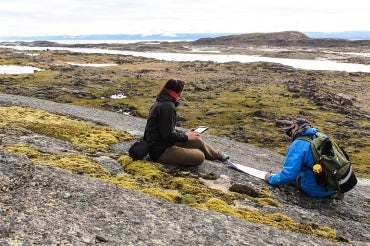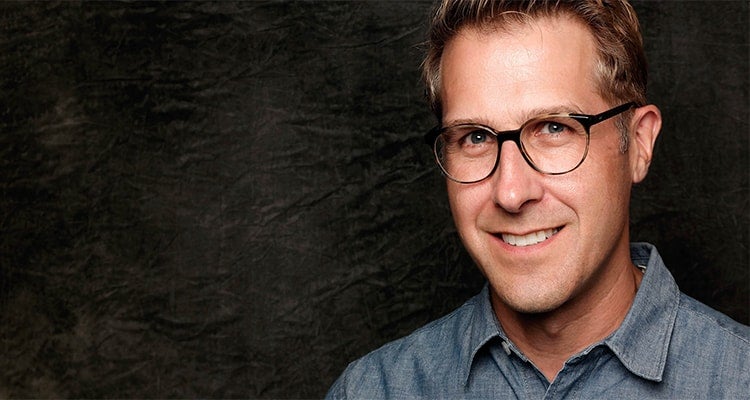The landscape of reconciliation: Chris Grosset reflects on nearly 20 years of working in Indigenous communities

Published: November 30, 2017
Indigenous hunters, elders, and a women’s sewing circle: They are some of the non-academic teachers that Chris Grosset says have transformed his landscape architecture practice.
“Learning on the job, learning in the field, learning in people’s homes has changed my approach,” says Grosset, a U of T alumnus who has worked in Indigenous communities for nearly 20 years. “Skills I needed to do this work have evolved over time. They’re not something I learned in school.”
Grosset, a partner and senior consultant at the Indigenous firm NVision Insight Group Inc., will share his experiences in a lecture tonight at the John H. Daniels Faculty of Architecture, Landscape and Design. His talk, “The Path. The Mountain. The Journey: Landscape architecture, learning and reconciliation” is part of the faculty’s “What Is A School?” lecture series, which explores the changing nature of the disciplines of architecture, landscape architecture, art and urbanism, as well as evolving pedagogies in these areas.

Chris Grosset has spent nearly 20 years working in Indigenous communities throughout Canada (photo courtesy of Chris Grosset)
“It is important for the field of landscape architecture to self-reflect on our changing role as design consultants,” explains Liat Margolis, an associate professor and director of the master of landscape architecture program. “Chris’s talk will purposefully not talk about projects but instead talk about his journey of unlearning and learning as a way of defining truth and reconciliation as it relates to landscape architecture.”
Margolis says bringing Grosset to U of T is part of an ongoing dialogue at Daniels about how to respond to the Truth and Reconciliation Commission’s calls to action.
Read about TRC at U of T
When Senator Murray Sinclair, former chair of the Truth and Reconciliation Commission, released the TRC calls to action in June 2015, he said, “We have described for you a mountain. We have shown you the path to the top. We call upon you to do the climbing.” Grosset, whose lecture title references Sinclair's symbolic mountain, says he's learned that on the path to reconciliation, it's important to slow down and listen.
As an example, Grosset describes a project he worked on – a public park – that came out of a lengthy consultation with a community in Nunavut that wanted to build a park to commemorate its cultural connection to whales. "They had just completed their first whale hunt in the modern history of their community and so we were able to secure the skull and jawbones of that whale that they had harvested, and that was integrated into the design.”
He says they were also able to get funding to help men in the community who had lost the traditional skills of working with stone. Men on income support were able to work on the project as a part of a training program. They learned to collect the stone and prepare the site, and ultimately they built the park.
“And so the thing is that in that case this is not about the design at all, it doesn’t matter what it looks like. The whole thing is about using the landscape to reconnect and to heal. So that’s what I try to do.”
Grosset recalls that when he completed his master's in landscape architecture at the University of Guelph, he had his heart set on working with heritage gardens: researching historic properties and designing gardens with contemporary art elements. As he was looking for that dream job, he took a trip to Iqaluit to visit some friends.
“When I arrived there … just to see the incredible white landscape, the big beautiful sky, just the vastness of it. It was just such a powerful landscape and I just knew that I wanted to stay there as long as I could."
Grosset’s lecture will take place from 6:30 to 8 p.m. in the Mediatheque, room 200 at 1 Spadina Crescent. Registration is required.



